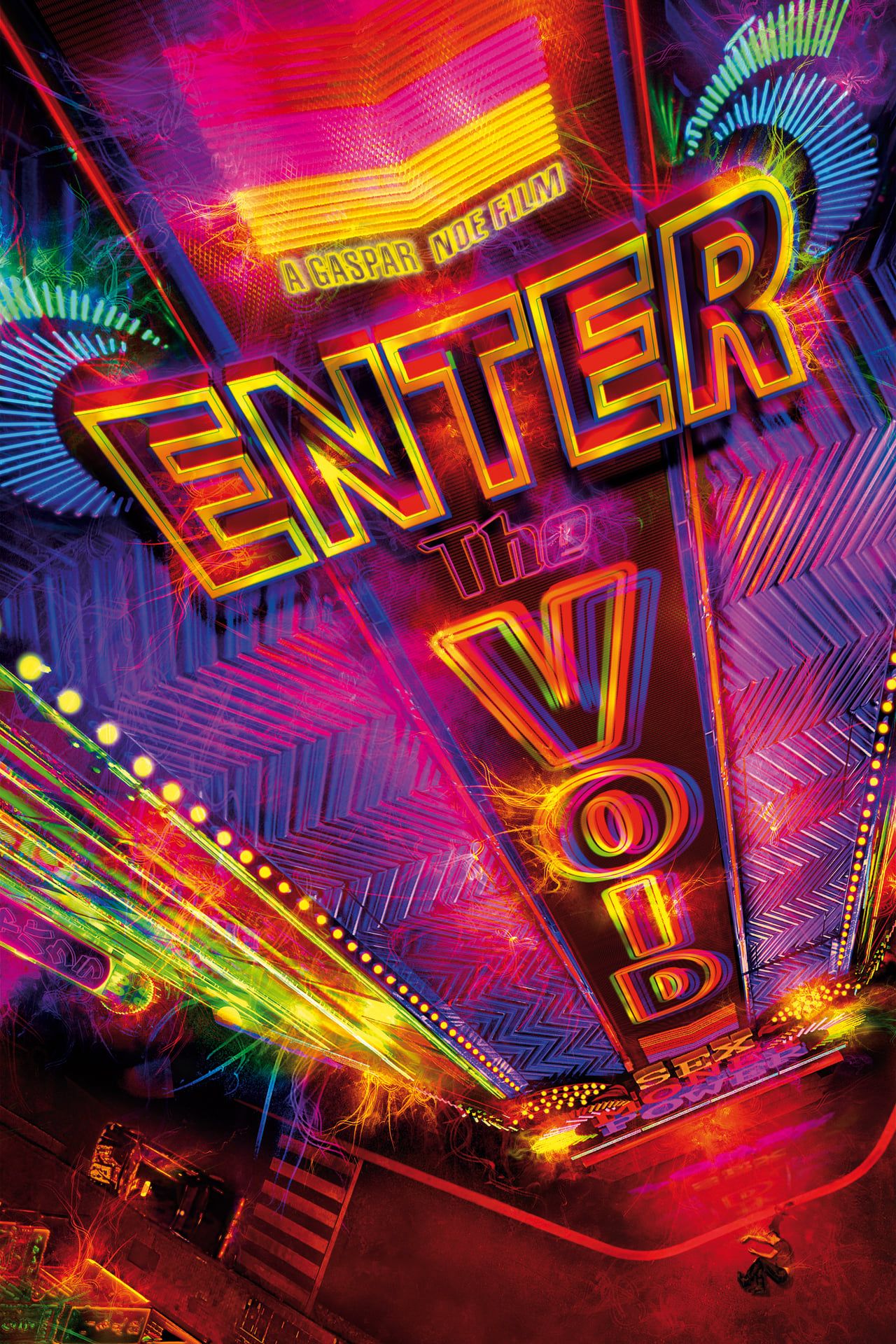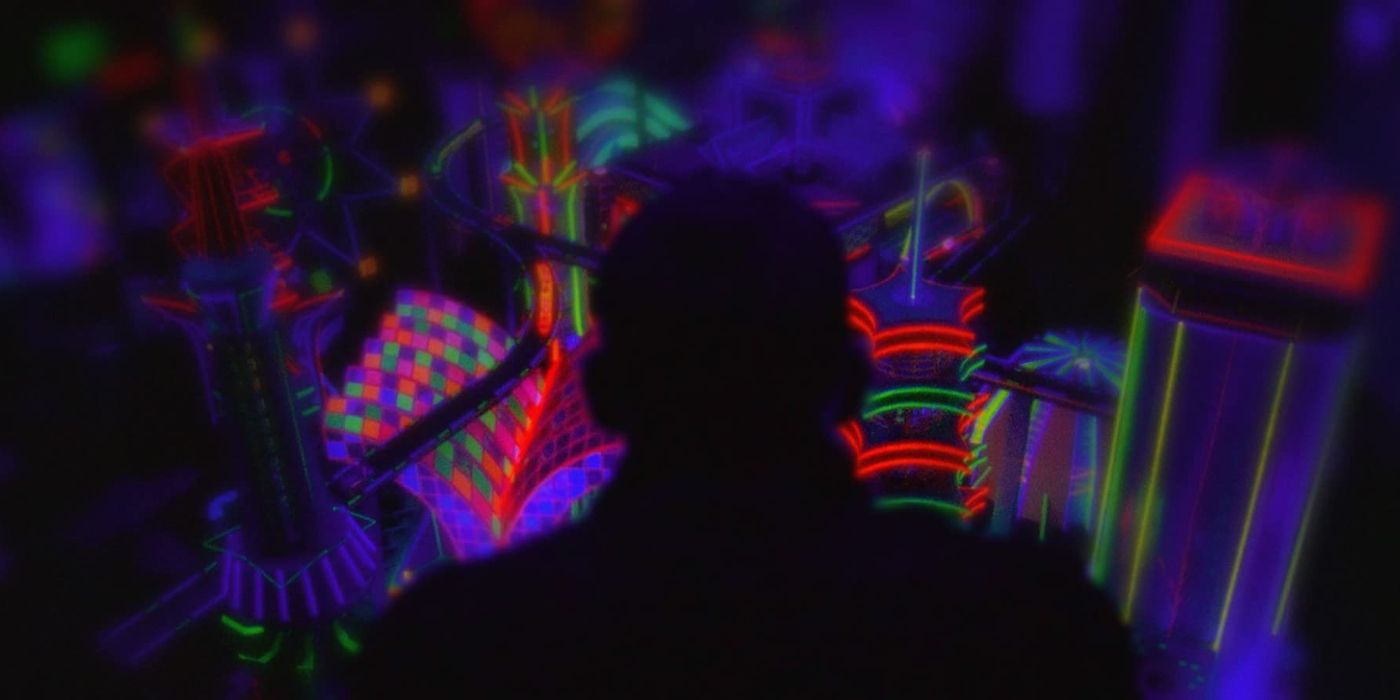Gaspar Noé’s Enter the Void is one of those films that sounds impossible to execute on paper. For one, it’s told entirely from the first-person POV of a drug dealer named Oscar (Nathaniel Brown), who kicks the bucket in the first 20 minutes. The rest of the time is spent watching life go on without him. No doubt, the premise is out of the box, but Noé pulls it off using the combination of hypnotic visuals, floating camera work, and blind dedication to his idea. Oscar’s story feels like watching someone spiral through Tokyo while stuck in a bad trip. There’s everything from trauma to drugs and even a complicated relationship with his sister Linda (Paz de la Huerta). All of it is crowned with a lot of trippy spiritual stuff — all filtered through the lens of the Tibetan Book of the Dead. Even though Noé isn’t trying to be subtle, the emotional weight sneaks in anyway.
Admittedly, some scenes are way too much (but that’s kind of the point), the film also has a ton of haunting moments that are only rivaled by its technical brilliance. The camera doesn’t just follow Oscar — it is Oscar, and when he dies, it literally floats through Tokyo, walls, and memories. Hands down, this visual style is the film’s biggest flex, and it makes you feel like you’re stuck in a dream you didn’t ask for but can’t escape. Nevertheless, Enter the Void isn’t for everyone. It’s long and intense, but above all, it is incredibly uncomfortable. But it’s also a one-of-a-kind experience — part artsy, part bad trip, part spiritual experiment.
‘Enter the Void’ May Be Set in a Neon Hellscape, but It’s Also Weirdly Spiritual
At first glance, Enter the Void’s vibe is loud, wild, and riddled with way too many strobe lights. But the minute viewers settle in a bit, something unexpected starts to surface — the movie has a spiritual touch to it. The thing is that it’s not in a soft, soulful way; in fact, it’s more like a cosmic panic attack that’s heavily coated with dread and guilt. Once Oscar dies, the film takes a sort of psychedelic leap, and it’s as weird as it is intriguing. But underneath all the spinning shots and Tokyo chaos is a strangely sacred vibe. The story borrows from The Tibetan Book of the Dead, which portrays death as a passage of sorts — through limbo, memory, and then rebirth. Oscar’s ghost goes on this trippy journey, and it’s safe to say that it’s as far from fun as anything could be. He’s caught in a purgatory of his own making that’s heavily characterized by bad memories, failed promises, and unfinished business with his sister, Linda.
It’s easy to mistake the way the camera follows Oscar’s soul through walls and rooftops as showboating, but it’s symbolic of the way the city itself is trapping him. So, Tokyo isn’t just neon lights and tons of noise; it’s basically a giant maze Oscar has to wander through after death. There’s also a lot of sex, drugs, and chaos in the mix, but it’s not just there for the extra edginess. All the messy, flashing moments keep circling back to this notion that Oscar is stuck and that his only escape is through something bigger than himself. All in all, Enter the Void can feel like a bit of a sensory overload, but beneath all the madness is a profound message about death, regret, and the terrifying idea that you might not be done just because your heart stops.
The Strange Genius Behind Why ‘Enter the Void’ Feels So Dragged Out
About halfway through Enter the Void, the film begins to feel like deja vu on steroids. That’s not lazy editing, in fact, it’s the whole point. Noé isn’t just dragging his feet through scenes for the “fun” of it; he’s leaning into the claustrophobia to make the audience feel just as trapped as Oscar. Viewers see him relive his own death multiple times, watch his sister Linda spiral into one bad situation after another. He equally revisits the same tiny emotional moments — like their pinky swear about “never leaving each other” — until they almost lose meaning.
Is it exhausting? Incredibly, but that’s the point, because death in Enter the Void is meant to be messy, obsessive, and full of regret. As mentioned earlier, the structure mirrors the Tibetan Book of the Dead, where souls linger, confused, before they can move on. So when the movie circles back to the same alleyways, or arguments, it’s not because it’s stuck but because Oscar’s stuck. Noé practically pushes viewers to be as frustrated as Oscar. And when you realize that, the whole slow, weird structure hits differently.
Enter the Void is available to stream on Shudder.



